“The electric car is perfectly noiseless and clean. There is no smell or vibration, and they should become very useful when fixed charging stations can be arranged. But for now, I do not anticipate that they will be very serviceable – at least for many years to come,” Charles Rolls once said.
Rolls uttered those words after experiencing the Columbia Electric Carriage way back in 1900, and after more than 120 years, the company he co-founded has presented exactly what was prophesied. Welcome everyone, to the all-new Rolls-Royce Spectre.
Set to be delivered to customers in the fourth quarter of 2023, the Spectre represents an important step in the Goodwood-based carmaker’s journey to have a fully electric product portfolio by 2030. To ensure its first EV is worthy of the Rolls-Royce name, the Spectre was subjected to an exhaustive testing programme that includes driving it for more than 2.5 million km in a variety of driving conditions (extreme heat and cold) to simulate 400 years of use.
Even so, the company says it must still perform further testing and optimisation on the Spectre before its market launch, but what you see here is pretty much the final product that customers will take delivery of next year.
The Spectre isn’t built on a dedicated EV platform but rather the brand’s all-aluminium Architecture of Luxury, which is also used for recent offerings like the Cullinan and eighth-generation Phantom. The architecture was designed from the start to be flexible in order to accommodate electric powertrains, and for the Spectre, engineers managed to make the vehicle 30% stiffer than any previous Rolls-Royce model.
This is thanks to the integration of the battery into the structure as well as the use of extruded aluminium sections. The former is placed between the floor and a channel created to house wiring and the climate system’s pipework, and according to the carmaker, doubles as 700 kg of sound deadening.
We’re not told the battery’s size, but it is said to provide up to 520 km of range following the WLTP cycle. It also powers two electric motors – one on each axle for all-wheel drive – that provide a total system output of 585 PS (577 hp or 430 kW) and 900 Nm of torque. That’s more than enough for wafting, but if you really need to get a move on, the Spectre can shift its 2,975 kg kerb weight from 0-100 km/h in just 4.5 seconds.

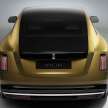

To keep the powertrain and all other electrical systems in check, Rolls-Royce developed its own ‘Decentralised Intelligence’ processing system that allows for the free and direct exchange of information between more than 1,000 vehicle functions. The company adds that a dedicated control was handmade for each of the car’s 141,200 sender-receiver variables (not including further sub-variables).
Of course, the hallmark of any Rolls-Royce is its “magic carpet ride,” so the Spectre gets a development of the planar suspension used on the latest Ghost. The setup features a camera system that reads the road ahead, adjusting the air springs and dampers to ensure passengers are “shielded from road imperfections. Additionally, it can also decouple the car’s anti-roll bars to isolate each wheel from the other when driving straight, re-engaging them when cornering.
Design-wise, the Spectre is unmistakably a Rolls-Royce. While it may echo the Wraith at first glance, there are plenty of specific design cues that highlight this as the start of a new era for the brand. As a start, the Pantheon grille is the widest fitted to any Rolls-Royce and the individual vertical vanes (with active shutters) are shaped to provide aerodynamic benefits. Like the Ghost, the grille is also softly illuminated by way of 22 LEDs.
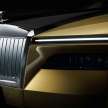

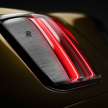
Flanking the grille is a dual-tier lighting system with upper light strips being the daytime running lights, while the main headlamps are further down. There’s also a wide-width lower intake with chrome accents and the brand’s signature Spirit of Ecstasy figurine, the latter redesigned following 830 hours of work to better carve through the air – the Spectre’s drag coefficient is the lowest of any Rolls-Royce model at just 0.25.
Along the sides, we find a long fastback roofline and massive 23-inch wheels that are a necessity to complement the size of the car. The company says the Spectre is the first production two-door coupe to come with wheels of this size in almost 100 years.
On the mention of size, the Spectre measures 5,453 mm long, 2,080 mm wide and 1,559 mm tall and the wheelbase spans 3,210 mm. That places it between the Cullinan and Phantom, which coincidentally, is also the price position the EV will occupy.
Moving to the rear, we find the roofline tapers down to the boot lid that is joined by taillights set into the largest single body panel ever produced for a Rolls-Royce. The jewel-like vertical clusters bear the brand’s logo and protrude slightly to help with airflow.
Opening the rear-hinged doors, we find a cabin that is filled with plenty of premium materials and opportunities for personalisation. The dashboard layout is reminiscent of other Rolls-Royce models, but the Spectre is the first to get a fully digital instrument cluster as well as Starlight Doors, which uses fibre optics to display 4,796 illuminated “stars” on the door cards.
There’s also the Starlight Headliner that was previously the only option available for other models, along with the Illuminated Fascia on the passenger side that showcases the Spectre nameplate surrounded by a cluster of over 5,500 “stars.” The Spirit digital architecture manages many of the vehicle functions, with customers able to access telematics via the Whispers app.
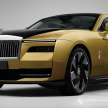




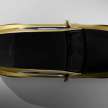


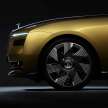
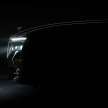

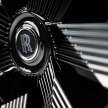











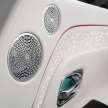
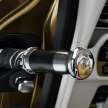



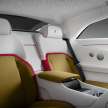

The post 2023 Rolls-Royce Spectre – two-door coupe debuts as brand’s first EV; 585 PS, 900 Nm, up to 520 km range appeared first on Paul Tan's Automotive News.

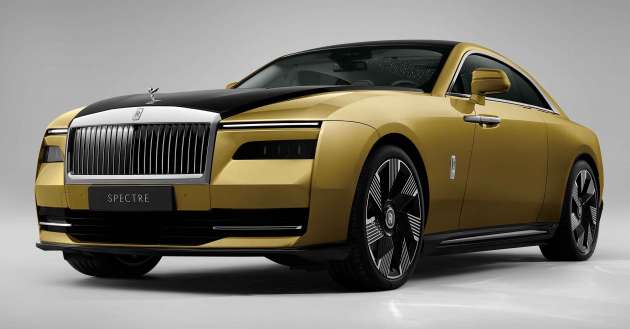
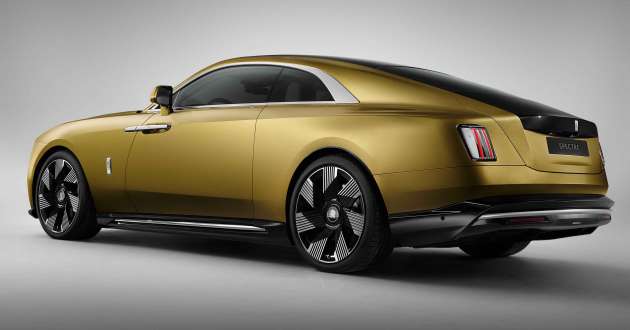


0 Comments